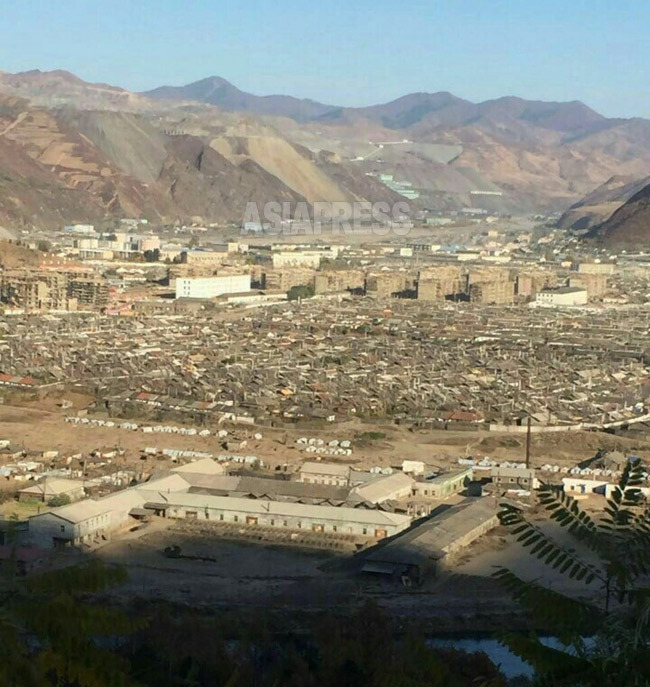
◆ Floods continue to hamper the Kim regime
Typhoon Haishen, which hit the Korean Peninsula in early September, significantly damaged Musan County in North Hamkyung Province. According to a reporting partner speaking with ASIAPRESS on September 14, farmlands were destroyed by landslides and the country’s largest iron mine was submerged. (Kang Ji-won)
Located on the border with China, Musan County has a population of about 100,000 and is home to the country’s largest iron mine. Regarding the current status of the mine, the reporting partner said the following:
“Due to the heavy rain caused by Typhoon Haishen, the mine’s refinery was submerged and much iron ore concentrate was lost, causing the river to turn black. In addition, two bridges connected to the mine collapsed and the road was blocked by a landslide, with even the railway tracks destroyed. It will take a considerable amount of time to recover.”
It seems that the damage to residential areas was also significant. A series of landslides caused rivers to break their banks, submerging tracts of farmland and damaging crops. In addition, the small tracts of farmland which residents had illegally cultivated on the sides of mountains were wiped away. In particular, the Changyeol Gangseon District was said to have suffered a lot of damage.
The Musan County residents who had illegally cultivated the small tracts of farmland on the sides of mountains were mainly cooperative farmers and miners. As it is difficult to survive off of the income from one’s official place of employment, many are said to bribe local officials in order to get away with cultivating beans and peppers on mountainsides to sell for cash at local markets.
The small mountainside tracts wiped away by the typhoon are unlikely to make a comeback as the practice is likely to be more strictly banned in the future. The reason for this stems from Kim Jong-un’s visit to North Hamkyung Province on September 5.
NextPage: ◆Kim Jong-un orders senior officials to restore forests...


![<Latest Photo Report> Scenes of North Korea Captured by Super Telephoto Lens (2) People Trapped in a "Cage” of Their Own Construction [ISHIMARU Jiro]](https://www.asiapress.org/rimjin-gang/wp-content/uploads/2021/08/20210823-asiapress-01-150x150.jpeg)






















